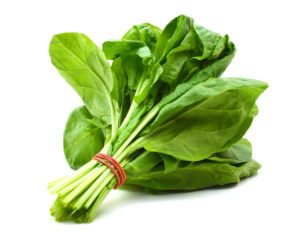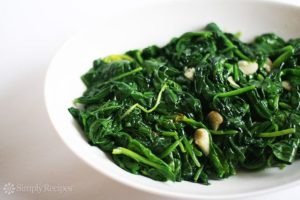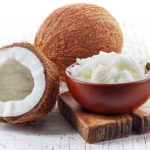BENEFITS OF SPINACH
Health benefits of Spinach is quite enormous because this excellent vegetable (spinach) has an astronomical protective properties as regards to the eyes (retina) and vision. The spinach originated from western Asia before it spread throughout Europe.
Today, this vegetable is cultivated throughout the globe. Countries like the United States of America, France, Italy and Germany are the main producing nations.
Its features includes:-
- Darker colour
- Rougher leaves
This attributes above make it outstanding than spinach cultivated with chemicals as it contains nitrates in small amounts.
Another health benefits is that spinach is quite rich in oxalic acid than every other food that is rich in oxalic acid. It is worthy to note that some of its content are lost when the water that is used for cooking is discarded.
The oxalic acid content is reduced and when this takes place, its vitamins and essential minerals are gone.
See Also: Pennyroyal is a medicinal plant for your healthy living
Percentage composition of the Spinach
Fibre = 2.7%
Carbohydrates = 0.80%
Fat = 0.350%
Water = 91.6%
Protein = 2.86%
Minerals = 1.72%
A 100 gram of raw edible ration of the spinach contains the following:
Energy, carbohydrates, fibre, niacin, Vitamin (A, B1, B2, B6, C, E), Calcium, phosphorus, iron, magnesium, potassium, zinc, saturated fat, folate, sodium and total fat.
Health Benefits of Spinach in terms of its Properties
Spinach is regarded as the most nutritious vegetable (green leafy). As stated above regarding per 100 grams of its raw edible portion, it only has 22 calories but the protein content is quite enormous (about 2.86%). Spinach contains carbohydrates in small amount (0.80%) and fats too (0.35%).

The essence of its nutritive strength is derived from the significant amount in vitamins and minerals it contains.
Therefore, 100 grams of spinach gives:
- 2/3 (two-third) of vitamin A needed in a day
- Correct amount of folic acid needed daily (200mg)
- ½ (half) of the vitamin C needed in a day
- ¼ of daily requirement of magnesium
- Above or more than one-fourth of Iron needed daily.
The above information is placed on the daily requirements of an adult male. This is in accordance with the information provided by Dr. George P. in his book “Encyclopedia of Foods and their Healing Power”
Caring the Eyes
Persons whose ages fall between 55 and above may experience disorder of the retina. According to an investigation performed at Harvard University and at the Massachusetts Eye and Ear Infirmary, individuals between the ages 55 and 80 years were placed on a diet which involved regular intake of spinach.
It was gathered that they would encounter lower risk to lose visual acuity as a result of macular deterioration.

Note that the macular is formed across the retina which is in correspondence to the area where visual acuity is attained. Although the degeneration of this spot of the retina is the primary cause responsible for blindness among the older folks.
It is also in record that the spinach has a high level of protective effect than carrots. This is because the spinach’s enormous levels of zeaxanthin and lutein as attributed by scientists.
READ ALSO: Watercress: Medicinal plant for the Blood
Production of Red Cells
Spinach contains greater proportion of Iron (about 2.71mg of Iron per 100g) than the one found in meat. The fact that plant sources are difficult to be absorbed as compound with those of animals, spinach’s vitamin C content significantly helps improves the absorption of minerals that are present.
Spinach richness in trace elements and other minerals help to improve red blood cell production which takes place within the bone marrow.
In case of anemia, it is recommended to consume fresh juice (liquid) of the spinach.

Preparation and Uses
- Cooking – Cooking the spinach by method of steaming help preserve its minerals and vitamins.
- When you freeze spinach, it loses a small amount of its Vitamin C
- When the spinach is tender and fresh, it may be consumed in salads.
- Juice – The recommended dose before lunch or dinner time is just a half glass per day.
For Pregnant Women
Spinach is quite rich in folate or folic acid and this helps prevent malfunction of the fetus. Therefore, it is recommended for pregnant women and coupled with its anti-anemic effects, it is highly recommended for pregnant women.
For Growth and Physical Activities
Adolescents in time of rapid growth need spinach included in their diet. Vitamins and minerals found in spinach is good and it is recommended for athletes since they always get themselves engaged in physical activities.
Caution:
Getting rid of the water reduces its oxalic acid content. Remember that the vitamins and minerals will be lost. Dairy products or milk should not be consumed together with the spinach since there is always an interference with calcium absorption.
Individuals suffering from excess uric acid, kidney stone or gout should not eat spinach. They may encounter complication as oxalic acid is flushed through the urine.
SEE ALSO: Cucumber Beautifies and Cleanses the Skin
Loquat, an Effective Anti-Diabetic Fruit
Comfrey, A Good Medicinal Plant for the Skin
For other health related topics, see also:
Effects of Racism and Xenophobic Attitudes on Health
Hatred: Physical Effects and Prevention
Natural Treatments for the Brain

A graduate of Computer Science and Information Management Technology. Diploma – Caregiving, Certificates – Dementia and Diabetes Awareness and Management. A researcher, blogger, songwriter, singer and acoustic guitarist. Born in an environment where natural talents such as healing are imparted at our natural birth. This natural talents of healing is the result of our genetic inheritance and the training from family environment.














